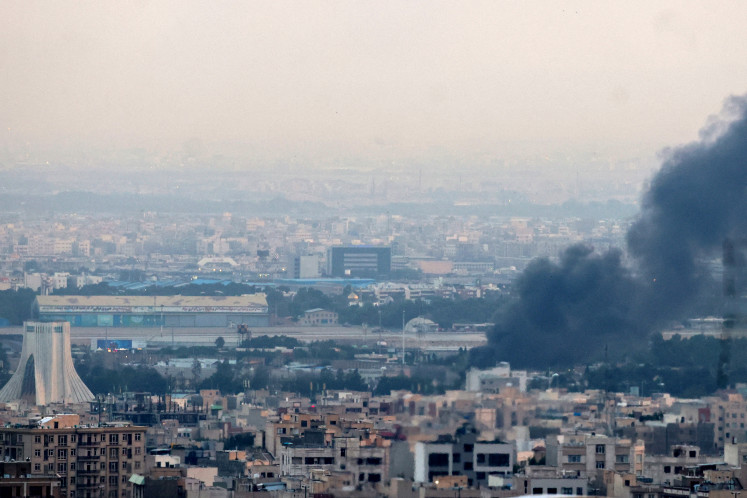Popular Reads
Top Results
Can't find what you're looking for?
View all search resultsPopular Reads
Top Results
Can't find what you're looking for?
View all search resultsFewer international airports won’t affect tourism: Minister
While many international airports will be closed to cut costs and improve efficiency, 15 airports will remain open and not reduce incoming flights from abroad.
Change text size
Gift Premium Articles
to Anyone

T
he government’s plans to reduce the number of number of international airports from 32 to about 15 is unlikely to have an affect on tourism, said Tourism and Creative Economy Minister Sandiaga Uno on Monday during a weekly briefing.
While many international airports will be closed to cut costs and improve efficiency, Sandiaga reaffirmed that the 15 airports, including the ones that are being upgraded to international airport status to support tourism in their area, will remain open and not reduce incoming flights from abroad.
This includes Labuan Bajo’s Komodo Airport in East Nusa Tenggara (NTT), which had its runway expanded last year to accommodate narrow-body aircraft that can serve short international routes, such as Boeing 737s. The airport is currently seeking to allow international airlines to make direct flights to Labuan Bajo, the gateway to the famous Komodo National Park.
“These 14 or 15 airports will roughly account for 98 percent of foreign tourist travel,” Sandiaga said as quoted by Tempo.co.
In late January, President Joko “Jokowi” Widodo agreed with Transportation Minister Budi Karya Sumadi and State-Owned Enterprises Minister Erick Thohir to cut the number of international airports by almost half to create a more efficient “hub and spoke” system.
Only 14 to 15 international airports will remain, while the 18 others will be repurposed to cater to haj and umrah (minor haj) flights.
“We will examine the matter further so interconnectivity will not be jeopardized and Indonesia can reach its target of 7.4 million tourists without burdening the state budget,” said Sandiaga.
Another rationale behind cutting the number of international airports, Erick said recently, was that most flights in Indonesia are domestic, carrying local passengers. It is hoped this streamlining will also encourage more Indonesian nationals to explore their own country instead of flying abroad for vacations, he added.
“Let us not create new avenues of excessive spending,” said Erick, as quoted by Antara. “Tourists in Indonesia are 70 percent local and 30 percent foreign.”
By improving interconnectivity, Budi added that this would include improving the infrastructural network in high-demand destinations, such as Lombok and Banyuwangi, through linking the resort islands with their surrounding areas.
This approach of regional development rather than building a new airport would have a greater impact on the tourist sector, he said.
Incoming flights
The government’s decision came as Indonesia’s most popular destinations were only starting to feel the return of incoming tourists after more than two years of mobility restrictions due to the pandemic.
In Bali, for example, January saw the return of Chinese nationals basking in the island’s charms, as well as taking day-trips to neighboring islands like Lombok.
“Bali is already full of tourists, even though it is not comparable with pre-pandemic levels. It is about 60 to 70 percent now. We hope that it will return to normal as soon as possible,” said Jokowi in January, as quoted by kompas.com.









